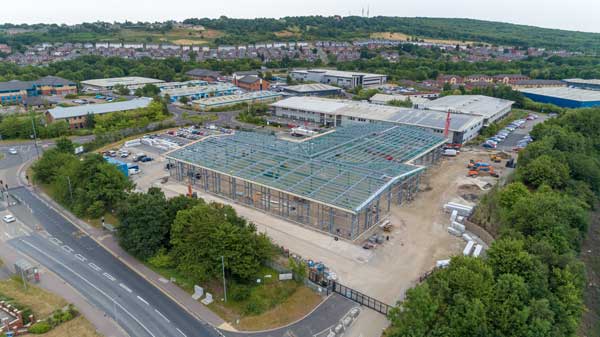News
President’s Column: April 2021
I’ve been informed by my social media that I’ve been in this industry for 25 years. During that time, a lot of technological advances have been brought into the industry, all with the aim of making our lives a lot easier. In many ways they have, a lot of the design and detailing programs on the market are superb bits of kit. One of the things that hasn’t improved however, is the quality and timeliness of coordinated information that we all have to suffer. During that time, every new technological advance was going to be the cure to poor information flow: the post, the fax, the email, extranets and BIM platforms. Certainly, the information flow has exponentially increased, but alas the quality of that information leaves a lot to be desired. What it means in the final reckoning is a lot of additional pressure put on our designers and detailers, with shortened lead in’s that can only make the probability of errors creeping in more likely, both in the technical and production phases. We all know the number of variations that are caused by this wasteful process, nobody likes doing them, nobody likes to pay for them.
Why is it still happening? In my opinion it’s the procurement process adopted in the UK. Main Contractors just refuse to appoint all the necessary design teams at the appropriate time, such that coordinated information can be accurately modelled. If they didn’t’ feel they needed to squeeze every pound out of the contract and just appointed the right guys on the right job much faster, I think that a lot of the problems we all face would be vastly reduced. I have found BIM to be a great idea, just like Esperanto, but it’s not working at the top end of the industry, that being client to steelwork contractor. Where it is more successful is between steelwork contractors and our sub-trades, such as metal deck, precast and edge protection contractors. Passing our models back through the chain to, say, architects for checking, also seems to work well.
Whilst sat in a sustainability meeting talking with a diverse set of academic thinkers, consulting engineers and steelwork contractors, much of the talk was on “minimum weight” design, the re-use of steel and the recycling of steel. The recycling argument of steel is a “no-brainer”; we should push that message hard. “Minimum weight” design was tried very unsuccessfully 25 years ago. In its worst form its “gravity only” design for the final condition only. Practical designers know only too well the many design and detailing challenges that are caused by inappropriate member design. I also think that with the advent of 3D steel design software, the days of inefficient design by consulting engineers are well gone. If anything, we spend more time in value engineering sessions trying to make changes to the structural system to pay for all the secondary steel left out of the primary design. Re-use in theory can be useful if done correctly and intelligently. There is talk of suggested minimum percentages of re-used steel on future contracts, but it is just not practical yet.
The steelwork industry is one of the most competitive industries you could be involved with. The vast majority of contracts are for bespoke buildings with the steelwork packages being priced at production style wafer thin margins. Working in the steelwork industry can be very frustrating, but it certainly is not dull.
Mark Denham
BCSA President














